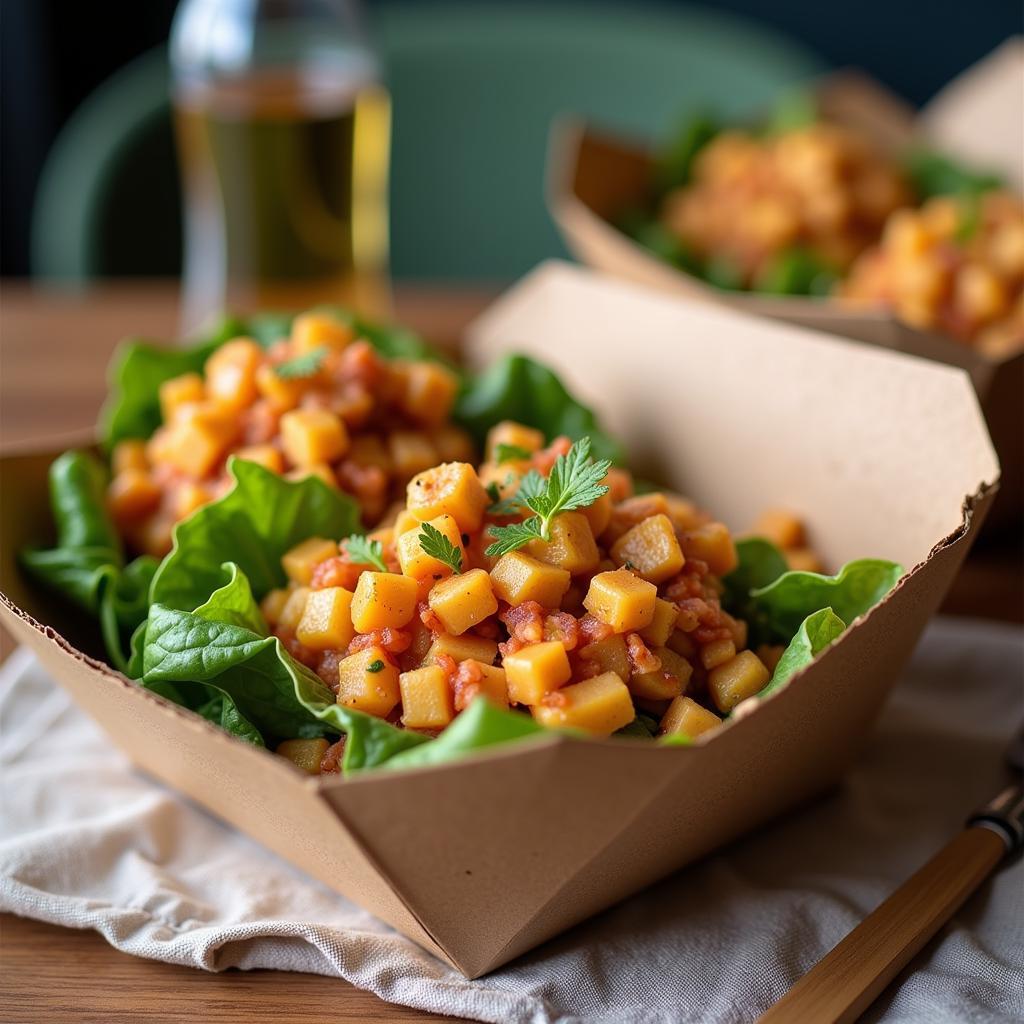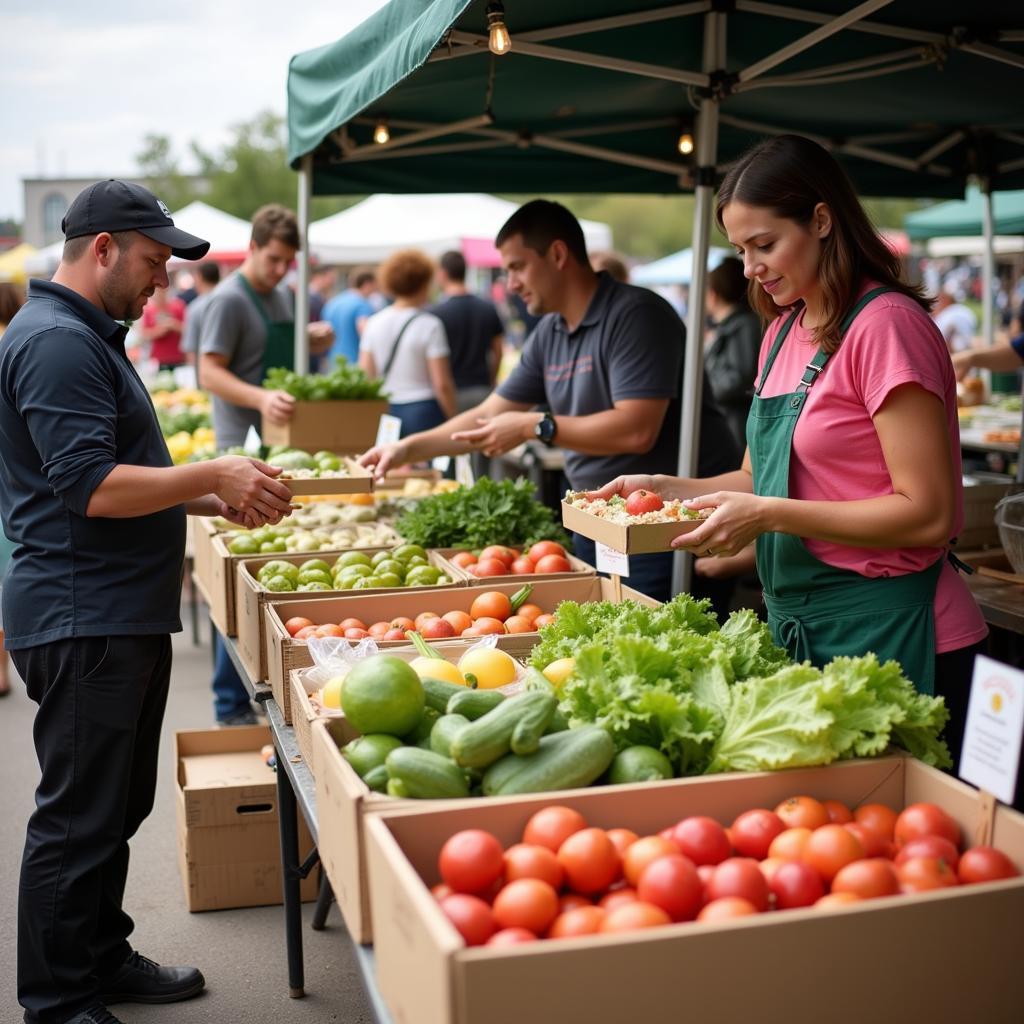In today’s world, where environmental consciousness is paramount, embracing sustainable practices is no longer an option but a necessity. From the food we consume to the packaging it comes in, every choice we make has an environmental impact. And when it comes to food packaging, Eco Food Containers are emerging as a game-changer, offering a responsible alternative to traditional, environmentally damaging options.
Why Choose Eco Food Containers?
The answer is simple: sustainability. Traditional food containers, often made from plastic, Styrofoam, or aluminum, contribute significantly to pollution and resource depletion. They take hundreds of years to decompose, clogging landfills and releasing harmful chemicals into the environment.
Eco-friendly food containers, on the other hand, are made from renewable, biodegradable, or compostable materials, minimizing their environmental footprint. They break down naturally, reducing waste and returning valuable nutrients to the soil.
Exploring the Benefits of Eco Food Containers
The advantages of switching to eco food containers extend beyond environmental responsibility. Let’s delve into the multifaceted benefits they offer:
- Reduced Carbon Footprint: Eco-friendly materials require less energy and resources to produce, resulting in lower greenhouse gas emissions compared to conventional packaging.
- Conservation of Natural Resources: By utilizing renewable and sustainable materials, eco food containers help conserve finite resources like petroleum, water, and timber.
- Biodegradability and Compostability: Many eco containers break down organically, enriching the soil and reducing landfill waste.
- Healthier Food Choices: Some eco-friendly materials are free from harmful chemicals often found in traditional packaging, reducing the risk of contamination.
Types of Eco Food Containers: A Comprehensive Guide
Navigating the world of eco-friendly food packaging can seem daunting with the plethora of options available. Let’s break down the most popular types:
1. Plant-Based Plastics (PLA)
PLA, derived from cornstarch or sugarcane, is a popular choice for its versatility and compostability. It’s commonly used for disposable cups, containers, and cutlery.
2. Bagasse (Sugarcane Pulp)
Bagasse, a byproduct of sugarcane processing, is molded into sturdy and compostable plates, bowls, and takeout containers.
3. Bamboo
Bamboo, a rapidly renewable resource, offers strength and durability. It’s used for reusable cutlery, lunch boxes, and food storage containers.
 Eco-Friendly Food Containers for Takeout
Eco-Friendly Food Containers for Takeout
4. Paper and Cardboard
Paper and cardboard, especially when sourced from sustainably managed forests, are classic choices for food packaging. They are recyclable and biodegradable, making them a responsible option.
5. Glass
Glass, a highly recyclable material, is an excellent choice for food storage and reusable containers. It’s inert and doesn’t leach harmful chemicals into food.
Making the Switch: Tips for Choosing and Using Eco Food Containers
Transitioning to eco food containers is a step in the right direction. Here’s how to make informed choices:
- Look for Certifications: Check for credible certifications like BPI Compostable, indicating that the product meets industry standards for compostability.
- Consider the Material: Choose materials suitable for your needs – compostable for single-use items, durable and reusable for long-term use.
- Proper Disposal: Follow local guidelines for composting or recycling eco-friendly packaging to ensure they are disposed of responsibly.
The Future of Food Packaging: Embracing Sustainability
“The shift towards eco-friendly food packaging is not just a trend; it’s a fundamental transformation of the industry,” says Sarah Jones, a sustainability expert at the Environmental Packaging Institute. “Consumers are demanding more sustainable options, and businesses are responding with innovative and responsible solutions.”
 Eco-Friendly Food Containers at a Farmers Market
Eco-Friendly Food Containers at a Farmers Market
Conclusion
Choosing eco food containers is a powerful way to minimize our environmental impact and contribute to a healthier planet. By understanding the benefits, exploring the diverse options, and making conscious choices, we can all be part of the solution. Let’s make a difference, one container at a time!
FAQs about Eco Food Containers
1. Are all eco food containers compostable?
Not all eco food containers are compostable. While many are made from biodegradable materials, some may require specific conditions or industrial composting facilities to break down completely.
2. Are eco-friendly containers more expensive?
The cost of eco-friendly containers has decreased significantly in recent years as demand has grown. However, they may still be slightly more expensive than conventional options in some cases.
3. Are eco food containers durable enough for hot or greasy foods?
Many eco food containers are designed to withstand hot and greasy foods. However, it’s essential to choose containers specifically designed for those purposes and check for temperature limitations.
4. Where can I buy eco food containers?
Eco food containers are becoming increasingly available. You can find them at supermarkets, specialty stores, online retailers, and restaurant supply companies.
5. Can I recycle eco food containers?
Recycling guidelines vary depending on the material and local regulations. Check with your local recycling program for specific instructions.
For any assistance or further questions, please feel free to reach out to us at Mina Cones Food. You can contact us at Phone Number: 02437655121, Email: minacones@gmail.com. Or visit us at: 3PGH+8R9, ĐT70A, thôn Trung, Bắc Từ Liêm, Hà Nội, Việt Nam. We have a dedicated customer support team available 24/7 to assist you.